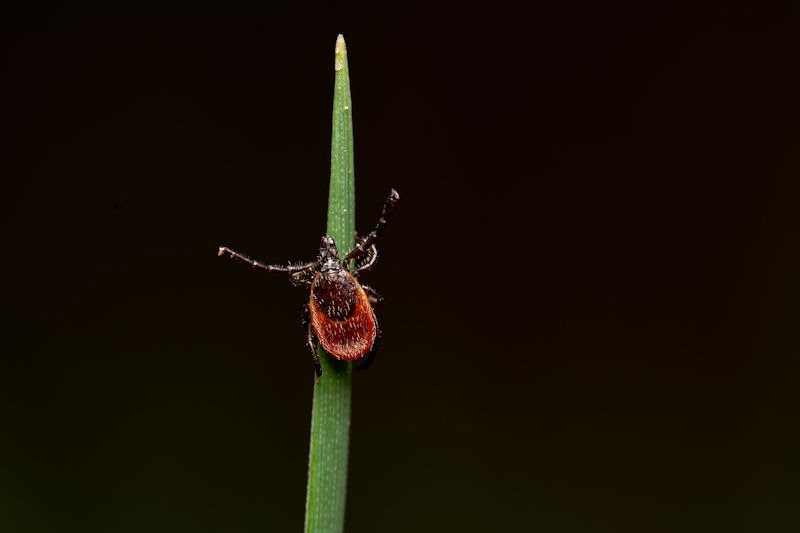Why Spring and Summer Matter for Tick Control
Black-legged ticks, also known as deer ticks, are the primary vectors of Lyme disease. These ticks are most active during spring and summer, making these seasons critical for intervention. The lifecycle of black-legged ticks comprises several stages: egg, larva, nymph, and adult. In spring, nymphs are particularly active and pose the highest risk of transmitting Lyme disease, as they are tiny and often go unnoticed during feeding. Adults are more active in the fall, but they also pose risks in early spring. Implementing control measures during this peak activity can significantly reduce the tick population and subsequent Lyme disease risk.
Specific Tick-Control Methods
Homeowners have several options for managing ticks in their yards and surrounding areas. Key strategies include:
- Yard Treatments and Perimeter Sprays: These treatments target ticks directly, especially in areas where they are most likely to thrive, such as wooded edges, tall grass, and leaf piles. Effective acaricides, like pyrethroids, can be applied to lawns and garden beds to kill ticks on contact. A recent study found that a targeted acaricide application can provide up to seven weeks of 100% control of ticks at different lifecycle stages, especially nymphs and adults Bickerton et al., 2020.
- Creating Tick-Safe Zones: Homeowners can modify landscaping to make it less attractive to ticks. Mowing lawns frequently, placing a three-foot barrier of wood chips or gravel between lawns and wooded areas, and removing leaf litter can significantly reduce tick habitats Del Fabbro, 2014.
- Integrated Control Methods: In addition to perimeter sprays, homeowners can use bait boxes for rodents (primary tick hosts) and deer-targeted devices to reduce the tick population in yards. Combining multiple control methods has shown to be highly effective in reducing tick density and minimizing the risk of Lyme disease transmission Williams et al., 2018.
Impact on Lyme Disease Risk
The primary benefit of targeting ticks during their peak activity in spring and summer is the reduced risk of Lyme disease. Disrupting the tick lifecycle at the nymph stage is particularly important because nymphs are responsible for the majority of Lyme disease cases. By reducing the tick population through effective treatment methods and tick-safe landscaping, homeowners can minimize the risk of Lyme transmission during these high-risk months.
Conclusion
Implementing tick treatments in spring and summer should be a priority for homeowners looking to protect themselves and their families from Lyme disease. By using a combination of yard treatments, perimeter sprays, and landscaping adjustments, homeowners can significantly lower tick populations and reduce Lyme disease risks. Proactive measures during these critical months are a key part of an effective Lyme prevention strategy.
FAQs
Q: Why is spring and summer the best time for tick treatments?
A: Ticks, particularly the nymph stage, are most active during spring and summer. Treating during these months targets ticks when they pose the greatest risk to humans.
Q: What are acaricides, and are they safe to use in my yard?
A: Acaricides are pesticides specifically designed to kill ticks and mites. They are generally safe when used according to manufacturer guidelines, but homeowners should keep children and pets away from treated areas until the spray has dried.
Q: Can creating a tick-safe yard alone reduce Lyme disease risk?
A: Yes, creating a tick-safe yard by removing leaf litter, mowing the lawn, and adding barriers like wood chips can help, but combining this with perimeter sprays and other treatments offers better protection.
Q: What else can I do to prevent tick bites in addition to yard treatments?
A: Wearing long sleeves, using tick repellents on skin and clothing, checking for ticks after outdoor activities, and drying clothes on high heat can further reduce the risk of tick bites and Lyme disease transmission Mowbray, 2016.
References
Bickerton, M., Mcsorley, K., & Toledo, A. (2020). A life stage-targeted acaricide application approach for the control of Haemaphysalis longicornis.
Williams, S. C., Little, E. A. H., Stafford, K., Molaei, G., & Linske, M. A. (2018). Integrated control of juvenile Ixodes scapularis parasitizing Peromyscus leucopus in residential settings.
Del Fabbro, S. (2014). Fencing and mowing as effective methods for reducing tick abundance on very small, infested plots.
Mowbray, F. (2016). The heat is on: Killing blacklegged ticks in residential washers and dryers to prevent tickborne diseases.
NEED HELP?
If you live in Southern Maryland, or Northern Virginia
FIND YOUR SOLUTION HERE
People, Pet & Pollinator Safe! Pest control for people who care.
